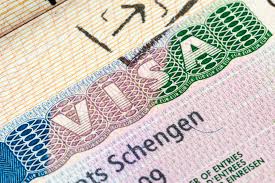7 Insider-Backed Strategies to Secure Your Schengen Visa Faster
Meta Description: Discover 7 expert-backed strategies to speed up your Schengen visa application. Learn how to avoid delays, increase approval chances, and travel stress-free.
Securing a Schengen visa can often feel like navigating a bureaucratic maze. Whether you’re planning a European getaway or attending a business event, waiting weeks for visa approval can be frustrating. The good news? There are proven insider-backed tips to accelerate your Schengen visa process—and we’ve compiled the top 7 right here.
1. Apply Early—but Not Too Early
Timing is everything. Schengen visa applications can be submitted up to six months before your travel date (or nine months for seafarers). However, applying at least 4–6 weeks before your trip is the sweet spot. This ensures you’re early enough to beat peak-season delays but not too early to invite scrutiny over changing travel plans.
Pro Tip: Avoid applying too close to your travel date. Visa processing usually takes 15 calendar days, but during high seasons, it may take longer.
2. Choose the Right Schengen Country as Your Main Destination
Many applicants make the mistake of applying to the wrong embassy or consulate. Always apply through the country where you will spend the most time, or if equal time is spent in multiple countries, apply where you’ll first enter.
Wrong: Flying into France but staying mostly in Italy—applying at the French Embassy
Right: Apply at the Italian consulate if Italy is your main destination
3. Use the Official Appointment Portals—Avoid Third Parties
One of the main causes of delay is booking appointments through unauthorized agents or websites. Most Schengen countries now use official online appointment systems like VFS Global or TLScontact. Always verify the correct portal from the embassy’s website.
Using official portals reduces the risk of fraud, delays, or missing documents.
4 . Send in a Comprehensive and Orderly Set of Documents
Applicants who submit thorough and well-organized documentation are valued by visa authorities. Included in your application should be:
A passport that is valid for at least three months after return
Application form filled out and signed
Photos from passports (EU standard)
Evidence of accommodations
Itinerary for travel
Reservation for round-trip airfare
Travel insurance with a minimum coverage of €30,000
Evidence of financial resources (e.g., job letter, bank statements)
Pro Tip: Arrange papers in the precise order specified on the embassy website by using folders or clips. It enhances your impression while saving visa officials time.
5. Demonstrate Strong Ties to Your Home Country
Visa officers need to be sure you’ll return home. To speed up approval:
Provide a strong cover letter detailing your ties
Submit evidence of employment, business, family obligations, or ongoing education
Include any past visas with clean travel history
Showing compelling reasons to return is often the key to faster approval and fewer additional questions.
6. Avoid Red Flags in Your Application
Certain mistakes can trigger delays or outright denials:
Inconsistent travel dates across documents
Insufficient funds
Lack of travel insurance
Missing hotel bookings or unclear itineraries
Avoid red flags by double-checking all information and keeping it consistent across forms and supporting documents.
7. Consider Premium or Express Services
Some Schengen consulates (and third-party processors like VFS) offer premium appointments, priority processing, or courier return services for an extra fee.
While this won’t guarantee approval, it can significantly cut waiting times for interviews and visa delivery.
